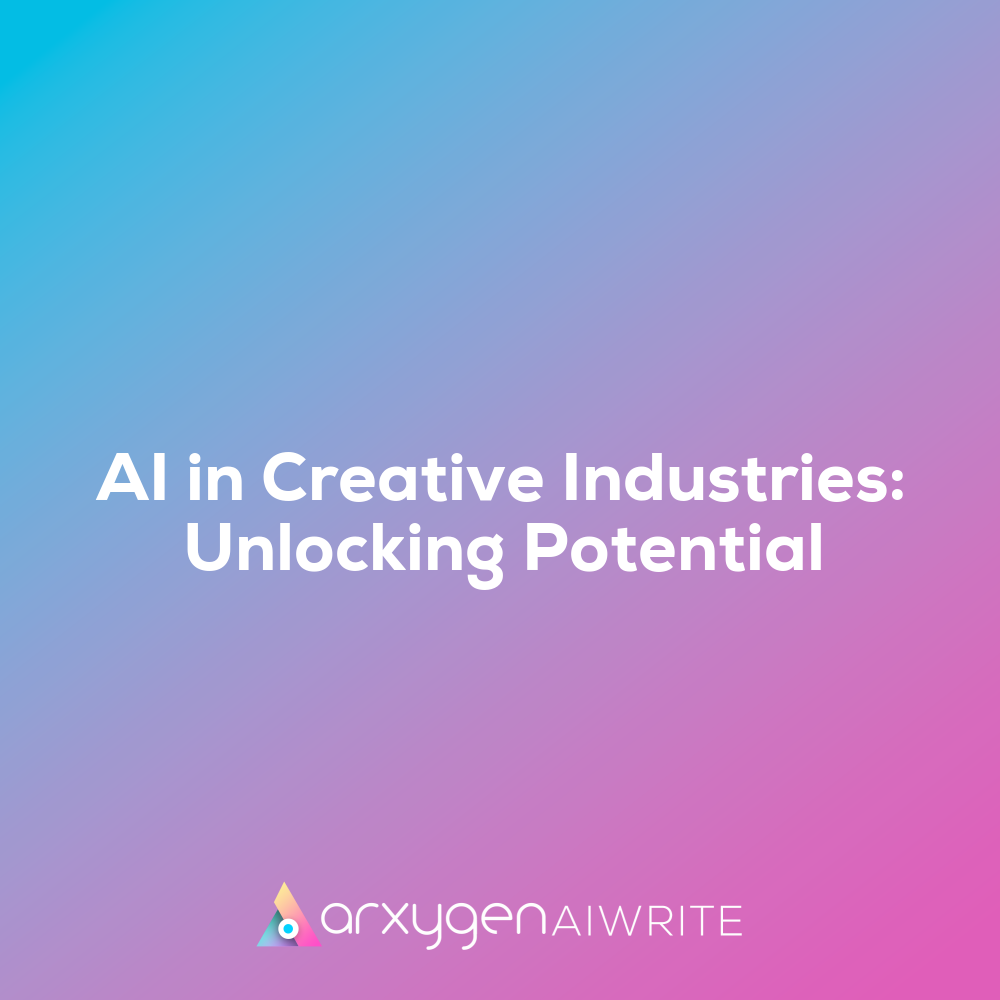The Role of Artificial Intelligence in Shaping Creative Industries
As artificial intelligence continues to evolve, its collaboration with artists is yielding remarkable innovations. For instance, in the world of visual arts, AI has been employed to generate unique pieces by analysing thousands of artworks, inspiring artists to explore new styles and techniques. In music, AI algorithms can compose melodies that resonate with human emotions, allowing musicians to build upon these foundations and create extraordinary compositions. Furthermore, filmmakers are leveraging AI tools to streamline the editing process, significantly reducing time spent on tedious tasks while enhancing storytelling through data-driven insights.
“AI is not just a tool; it is a collaborator that enhances the creative process, enabling artists, musicians, and writers to push the boundaries of their imagination.”
One fascinating case study involves a renowned fashion designer who utilised AI to forecast trends by analysing social media patterns and consumer preferences. This approach not only informed her design choices but also allowed her to engage with her audience in real-time. Additionally, writers are discovering AI’s potential as a brainstorming partner, generating prompts and even drafting sections of text that authors can refine and personalise. Ultimately, these advancements signify a paradigm shift in creative industries, where technology not only complements but also amplifies human creativity.
Exploring New Job Opportunities for Creatives in the AI Era
As artificial intelligence continues to permeate creative industries, the landscape of job roles is evolving dramatically. Traditional creatives are now presented with the opportunity to embrace hybrid positions that blend technology with artistic expression. For instance, roles such as AI-assisted designers and data-driven content creators are emerging, allowing professionals to leverage advanced tools while maintaining their unique artistic vision. This shift not only enhances productivity but also opens avenues for innovation that were previously unimaginable.
Moreover, the demand for professionals who can interpret AI-generated insights is growing. Creatives are required to possess a new set of skills that includes a solid understanding of algorithms and data analysis. This knowledge enables them to collaborate effectively with AI technologies, ensuring their work remains relevant in an increasingly automated world. As a result, educational institutions are adapting their curricula to include courses on machine learning and digital storytelling, equipping future creatives with the necessary expertise.
Additionally, the integration of AI into creative processes encourages a mindset of continuous learning. Professionals who once relied solely on traditional techniques must now be adaptable, embracing new technologies and methodologies. This dynamic environment fosters collaboration between artists and technologists, leading to groundbreaking projects that challenge conventional boundaries. The synergy between human creativity and machine efficiency is paving the way for a new era of artistic expression.
Ultimately, as creatives navigate this transformative landscape, they must cultivate a diverse skill set that marries artistry with technological proficiency. The ability to think critically about AI’s role in their work will be crucial for success. By embracing change and exploring these novel opportunities, creatives can thrive alongside AI technologies and redefine their contributions to the industry.
Exploring the Ethical Dimensions and Future Innovations of AI in Creative Industries
The landscape of creative industries is on the brink of transformation, driven by advancements in artificial intelligence. As AI continues to evolve, we can expect innovative tools that enhance storytelling in film and revolutionise music production, potentially creating immersive experiences that were previously unimaginable. However, this rapid progress raises significant ethical questions, particularly concerning copyright and intellectual property rights. For instance, who truly owns a piece of art generated by an AI algorithm? As artists increasingly collaborate with AI, defining ownership becomes a complex challenge that could reshape traditional notions of creativity. Moreover, the potential for AI to replicate styles may lead to concerns over authenticity and originality, prompting debates within artistic communities. As we venture further into this new era, striking a balance between leveraging AI’s capabilities and respecting the rights of creators will be essential for a sustainable future in the arts.

